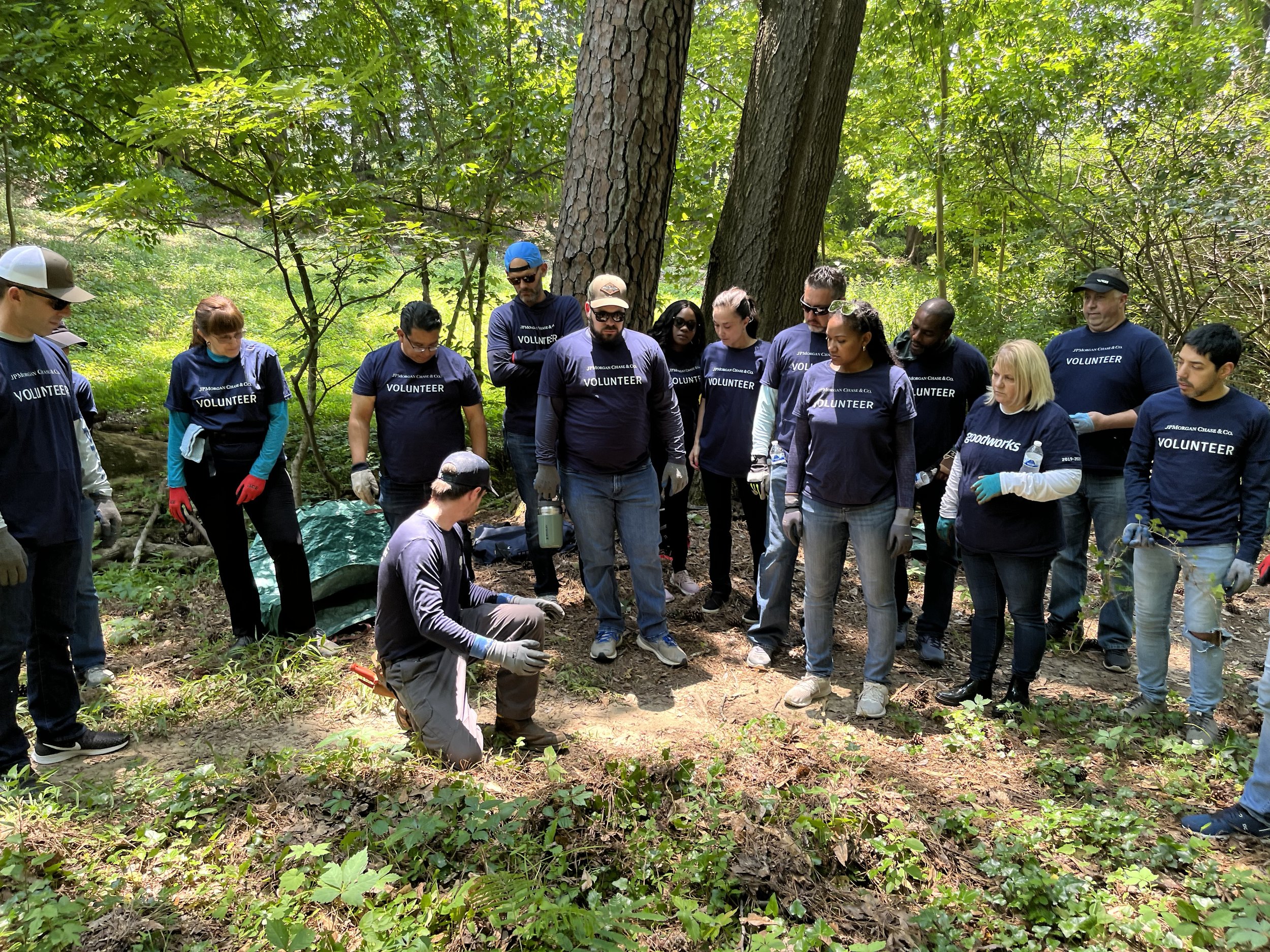
Woods Keeper at
Chastain Park

Chastain Park Fall Recap 2024
The WK team paid a visit twice a month To Chastain Park during the fall months concentrating on our main work area near the intersection of Lake Forrest and Laurel Drive. One highlight among the many native plants preserved was the beautiful Calico Aster (Symphyotrichum lateriflorum). As we continue to remove non-native invasive plants we were thrilled to put some life back into the ground as well — in addition to native seeds we planted several dozen native blue mistflowers (Conoclinium coelestinum) provided and grown by the Chastain Park Conservancy
During an October workday we helped to lead some amazing volunteers from Cox Enterprises! We pulled so much English ivy, spread a variety of native seeds, and even built an “ivy bin” where all that pulled ivy can decompose in an orderly fashion. Working with volunteers has been a passion for Woods Keeper since day one and we always welcome the opportunity. Thank you volunteers!
Winter is finally here, increasing visibility and revealing what we’re up against in the coming months. If you see us out and about in the park don’t hesitate to say hi and ask questions. We’re always eager to talk shop!
Overview:
In Spring of 2022 Woods Keeper began work at Chastain Park in an area once nicknamed “kudzu canyon” that’s no stranger to restoration work. Many native plants like trillium, buckeye, sunflower, goldenrods, and asters are naturally returning in some areas while remaining invasive plants like English ivy still dominate in others (before-&-after shown below). Other targeted non-native invasive plants include privet, porcelain berry, elaeagnus, stiltgrass, and multiflora rose.
Working alongside Chastain Park Conservancy who is actively planting native plants throughout the park, Woods Keeper is continuing restoration efforts to remove and suppress these harmful invasive plants while nurturing the native plants and trees that support our local ecosystem. A small offshoot of Nancy Creek runs through the area supporting healthy populations of jewelweed, American jumpseed and much more. The stream flows over the roots of an enormous green ash tree (shown below), a tree so big it made the Atlanta Champion Tree list at #2 for this endangered species.
As the transformation unfolds from an unhealthy and overwhelmed landscape to a biodiverse and abundant woodlands, beauty will naturally follow. Check back for updates, or better yet come see for yourself!
**Does native habitat restoration mean every plant that’s non-native will be removed? No. We believe non-native plants can have a place in landscapes as long as they are not invasive. This issue is not black and white and often requires a nuanced discussion involving the specifics of the site.
Not only does invasive plant removal improve the health and beauty of our natural areas, it also makes trails more inviting.
Brian Barnes of Chastain Park Conservancy and Eli Dickerson of Park Pride measure the large green ash (Fraxinus pennsylvanica).
A host to swallowtail caterpillars and many moths, green ash trees also provide cover and food to many bird and animal species. The green ash has rapidly become endangered in North America due to the Emerald Ash Borer, an invasive beetle whose larvae feed on the inner bark ultimately killing the tree.
Still seemingly healthy for now, this green ash at Chastain Park measures over 11 feet in circumference, 100 feet high, and 60 feet in average crown spread putting it at #2 on Trees Atlanta’s Champion Tree list.






















